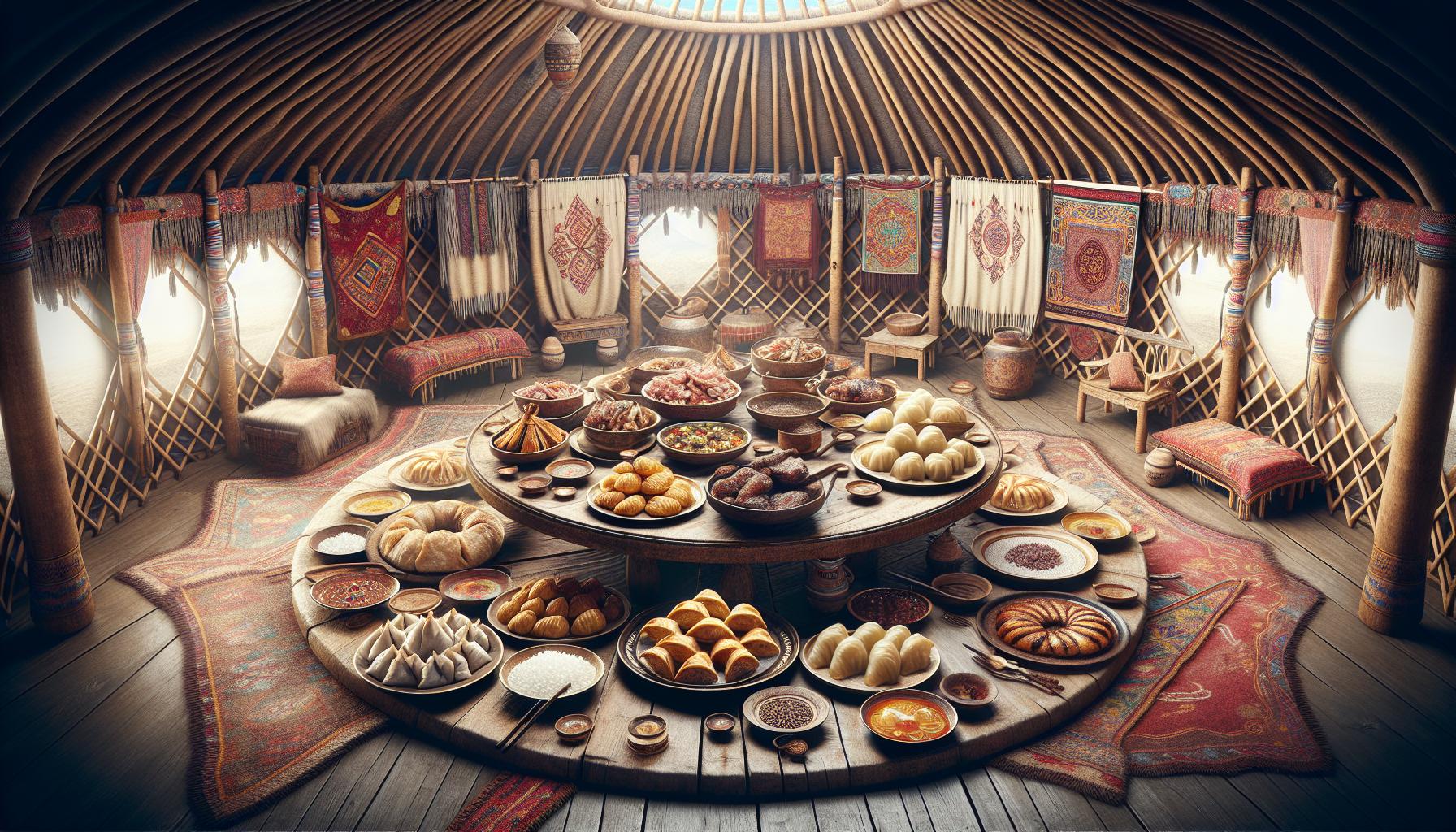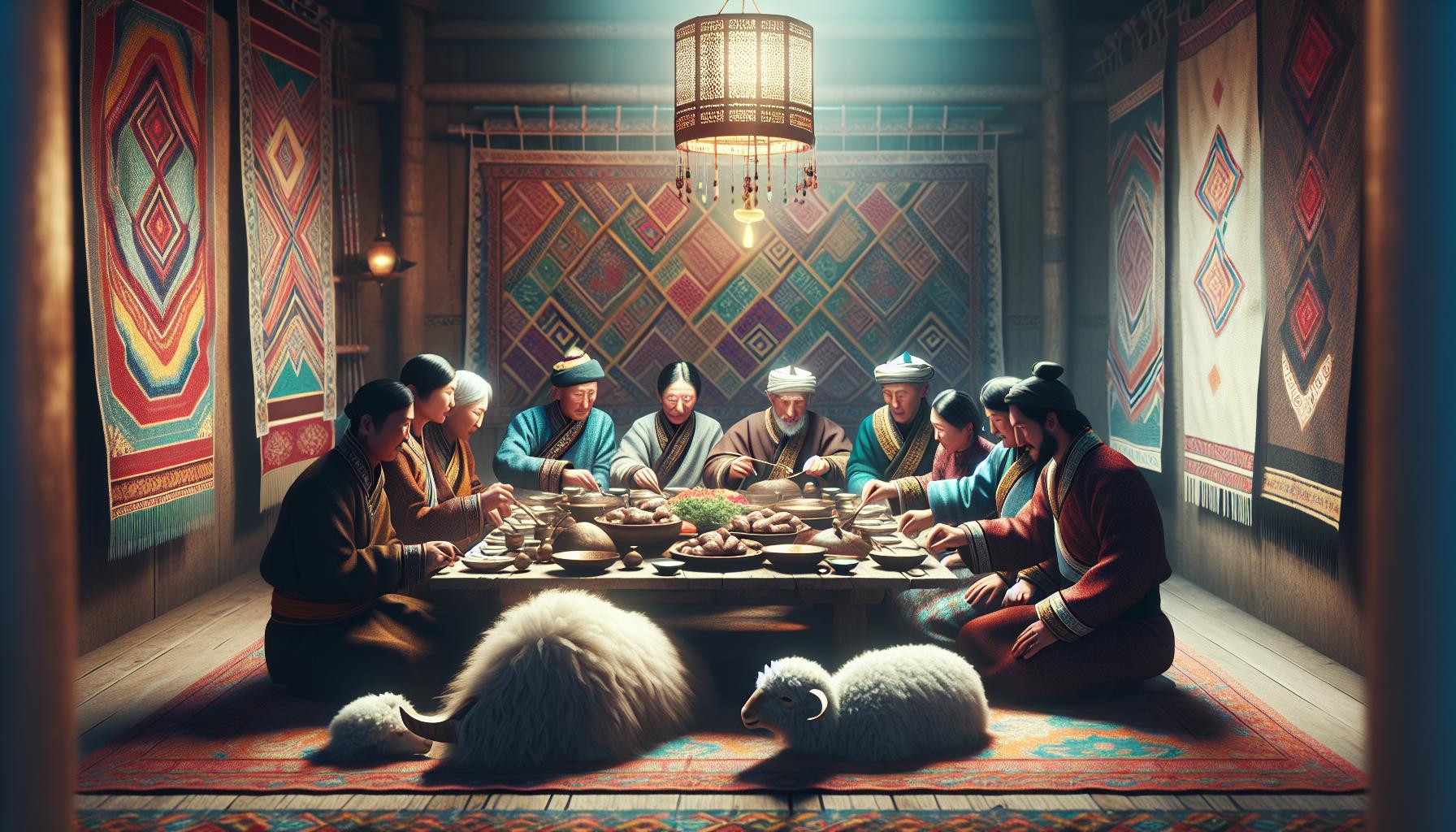Mongolian cuisine tells a fascinating story of survival resilience and resourcefulness. From the vast steppes to modern cities the food culture reflects centuries of nomadic traditions that have shaped Mongolia’s unique culinary identity.
While many might picture Mongolian BBQ when thinking of this cuisine that’s actually an American invention! The real Mongolian food experience centers around hearty meat dishes nourishing dairy products and time-honored cooking methods that have sustained nomadic communities for generations. These traditional foods have helped Mongolians thrive in one of the world’s harshest climates where temperatures can swing from scorching summers to bone-chilling winters.
The Origins of Mongolian Cuisine
Mongolian cuisine emerged from the harsh landscapes of Central Asia dating back to the 13th century. The traditional food practices evolved from the necessity to survive in extreme temperatures ranging from -40°F to 104°F.
Nomadic Influences on Food Traditions
Nomadic lifestyles shaped Mongolian cooking through practical preservation techniques developed across generations. Mongolian herders maximized the use of their livestock – sheep, goats, horses, yaks – by creating nutrient-dense foods that could last through long winters. Traditional dishes like borts (dried meat) emerged from the need to preserve protein sources during seasonal migrations. The practice of fermenting mare’s milk into airag demonstrates how nomads transformed available resources into sustainable food options. Storing dairy products in leather bags while traveling led to the discovery of unique preservation methods that remain relevant in modern Mongolian cuisine.
Historical Evolution of Cooking Methods
Ancient Mongolian warriors introduced efficient cooking techniques using hot stones called khan stones. Placing these heated rocks into carcasses created a primitive slow-cooking method that tenderized tough meat. The development of the traditional ger (yurt) kitchen incorporated specialized tools like the tugul (tripod) for hanging cooking pots over fires. Metal cookware arrived through trade routes during the empire period, expanding cooking possibilities. Steaming techniques emerged in the 16th century through increased contact with Chinese cultures. Underground cooking pits called khorkhog developed as a method to prepare meat while conserving fuel in areas with limited resources.
Essential Ingredients in Mongolian Cooking

Traditional Mongolian cuisine relies on a focused selection of ingredients sourced from livestock and locally available resources. The emphasis on preservation techniques shapes the preparation of these core ingredients.
Meat-Based Staples
Mongolian cooking centers on meat from five primary animals: sheep, goats, cattle, horses and yaks. Mutton stands as the most commonly used meat, appearing in signature dishes like khorkhog (stone-cooked mutton) and tsuivan (noodles with meat). Borts, a dried meat product, serves as a crucial protein source during winter months. This concentrated form of meat preserves for several months and reconstitutes in soups or stews. Game meats including marmot and goat supplement the diet in specific regions, while beef appears in urban dishes like buuz (dumplings) or huushuur (fried meat pastries).
Dairy Products and Fermented Foods
Dairy products form the foundation of Mongolian cuisine through traditional preparations called “tsagaan idee” (white foods). Airag, fermented mare’s milk, contains beneficial probiotics and serves as both beverage and cooking ingredient. Aaruul, dried curds, provide portable nutrition and calcium. Mongolians produce multiple varieties of cheese including byaslag (pressed cheese) and eezgii (cooked cheese). Suutei tsai, a salted milk tea, incorporates dairy into daily rituals. Yogurt-based products like tarag offer protein-rich options, while ghee extracted from yak milk adds richness to dishes.
Traditional Mongolian Dishes

Mongolian cuisine features distinctive dishes that reflect the nation’s nomadic heritage through simple cooking methods with complex flavors. These time-honored recipes maximize available ingredients while providing essential nutrients for survival in harsh climates.
Iconic Recipes and Preparations
Buuz, steamed dumplings filled with minced mutton or beef, stand as Mongolia’s national dish. Khuushuur, a deep-fried pastry containing seasoned meat, serves as a portable meal for travelers. Tsuivan combines hand-made noodles with meat strips in a stir-fried preparation. Boortsog, fried dough pieces, accompany milk tea as a daily staple. Khorkhog presents meat cooked with hot stones in a sealed container, creating a distinctive smoky flavor. Niislel salad incorporates mayonnaise-dressed vegetables with beef strips, reflecting modern urban influences. Banshtai tsai offers a unique combination of meat dumplings in salted milk tea, demonstrating the fusion of pastoral ingredients.
Seasonal Food Patterns
Summer brings abundant dairy products like airag, tarag, and aaruul, produced from fresh milk supplies. Spring introduces tender lamb dishes along with foraged wild onions and herbs. Fall marks the preparation of borts (dried meat) and other preservation techniques for winter storage. Winter relies on preserved foods including dried dairy products, frozen meat, and hearty soups. Mongolians adjust cooking methods based on seasonal ingredients, using quick-cooking techniques in summer and slow-cooking in winter. Fresh meat consumption peaks during the cool months when natural refrigeration exists. Dairy processing intensifies during warmer months when livestock produce milk abundantly.
Dining Customs and Etiquette

Mongolian dining customs reflect deep-rooted cultural values of hospitality, respect, and community bonding. These traditions emphasize sharing meals as a sacred act that strengthens social connections.
Social Significance of Shared Meals
Sharing meals in Mongolia transcends basic sustenance to create meaningful social bonds. Hosts demonstrate respect by offering guests the choicest cuts of meat, particularly the sheep’s head or hip bone to the most honored attendees. The practice of passing snuff bottles before meals establishes social hierarchy and mutual respect among diners. Large gatherings often feature multiple shared dishes placed in the center of low tables, with family members seated according to age and status. Mongolian festivals like Tsagaan Sar (Lunar New Year) center around communal feasting, where families gather to share traditional dishes such as buuz dumplings.
Traditional Eating Practices
Mongolians observe specific eating protocols that honor their nomadic heritage. Diners sit cross-legged on the floor around a low table, with elders positioned at the north end facing the door. The right hand serves as the primary eating hand, while the left remains clean for passing dishes. Food appreciation manifests through complete consumption of portions, leaving an empty plate signals respect for the meal. Common practices include breaking bread with both hands before eating, accepting food with an open palm, and taking small bites to show restraint. Tea ceremonies precede most meals, with guests receiving bowls of suutei tsai (salted milk tea) filled to specific levels based on status.
Modern Mongolian Food Culture
Mongolia’s culinary landscape blends ancient traditions with contemporary influences, creating a unique fusion of old and new. Modern Mongolian cuisine reflects the country’s rapid urbanization while maintaining strong ties to its nomadic roots.
Urban Food Trends
Contemporary Mongolian cities showcase diverse dining options ranging from traditional eateries to international restaurants. Urban centers like Ulaanbaatar feature fusion restaurants that incorporate traditional ingredients into modern dishes, such as buuz-inspired burger buns filled with spiced mutton. Food delivery apps connect city dwellers to both traditional Mongolian cuisine and global flavors. Korean, Chinese and Western restaurants populate major streets, offering new tastes to younger generations. Fast-food chains coexist with food courts serving traditional dishes like tsuivan and khuushuur. Street food vendors adapt classic recipes into portable formats, creating convenient options for busy city life.
Preservation of Cultural Heritage
Traditional Mongolian cooking methods persist through cultural education programs in schools and communities. Local food festivals celebrate authentic dishes while introducing innovative preparation techniques to younger generations. Family-owned restaurants maintain time-honored recipes, passing knowledge from one generation to the next. Cultural centers offer workshops on traditional dairy processing and meat preservation techniques. Food tourism experiences connect visitors with nomadic families to learn authentic cooking methods. Television shows and social media channels document traditional cooking practices, ensuring their preservation in digital formats. Government initiatives support local food producers who use traditional methods to create dairy products and preserved meats.
Conclusion
Mongolian cuisine stands as a testament to human adaptability and cultural preservation. Its remarkable journey from ancient nomadic traditions to modern urban tables demonstrates how food culture can evolve while maintaining its core identity. Today’s Mongolian culinary landscape beautifully balances time-honored practices with contemporary innovations.
The preservation of traditional cooking methods recipes and dining customs ensures that future generations will continue to experience the authentic flavors of Mongolia. As the country moves forward these culinary traditions serve as a vital link to its nomadic heritage while embracing the possibilities of the modern world.

